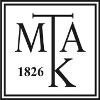Sánta, Gábor and Šmit, Žiga (2024) Dél-alföldi koszideri és halomsíros bronztárgyak elemzési adatainak újraértékelése = Re-evaluation of metal analyses of Koszider period and Tumulus Culture bronze objects from the Southern Great Plain (SE Hungary). ARCHEOMETRIAI MŰHELY, 21 (4). pp. 395-422. ISSN 1786-271X
|
Text
AM-2024-4-SG.pdf - Published Version Download (1MB) | Preview |
|
|
Text (Melléklet)
AM-2024-4-SG-2melleklet.pdf - Published Version Download (143kB) | Preview |
Abstract
2010-2011-ben zajlott archeometallurgiai projektünk a Szegedi Tudományegyetem, a Jožef Stefan Institute (Ljubljana, Szlovénia) és az MTA Atommagkutató Intézet (MTA ATOMKI, Debrecen) együttműködésében, az Európai Unió CHARISMA/SPIRIT pályázatának támogatásával. A Jožef Stefan Institute-ban (Ljubljana,Szlovénia) és az ATOMKI-ban (Debrecen) végzett mérési eredményeket, valamint interpretációjukat magyar és angol nyelven publikáltuk (Sánta 2011, Sánta 2013, Šmit 2015). Időközben a jelentős módszertani előrehaladásés forrásanyag-bővülés miatt időszerűvé vált az eredmények újraértelmezése. A 39 db vizsgált bronzkori tárgy alapanyaga As, Sb, Ni, Ag-tartalmú réz (1. melléklet). Ezt a halmazt főkomponens-analízissel csoportokra bontottuk. Három csoportot és egy alcsoportot tudtunk elkülöníteni köztük: egy átlagos összetételű (1-1a.), egy cinkben (2.), és egy ólomban dús (3.) csoportot (3. ábra). A tárgyak óntartalma kb. 4-20 t% között változik, átlagosan 10 t% (4. ábra). A vizsgált tárgyak bizonyos nyomelemeiből (As, Sb, Ag, Ni) képzett aránypárokat a friss szakirodalomban fellelhető azonos skálázású logaritmikus diagramokra vetítettük. A tárgyak a kulcsfontosságú Ag/Ni diagramon egyértelműen elkülönülnek a mitterbergi eredetű tárgyaktól, és átfedésben vannak a szlovákiai Garam-völgyből és az észak-itáliai Trento környékéről ismert ércminták, réz- és bronztárgyak Ag/Ni arányaival (6. ábra, 11. ábra). Eredményeinket a Hajdúsámson-Apa kör, és a koszideri időszak más fémelemzési adataival hasonlítottuk össze. A téma kutatói körében konszenzus kezd kialakulni a Garam-völgyi érctelepek intenzív kora és középső bronzkori műveléséről, ahonnan az északi bronzkor fémanyaga is javarészt származik. A Trento környéki bányászat egyik fő periódusa a vizsgált korszakban indul és az egész késő bronzkorban jelentős, a nyersanyag a Közép-Balkánon, egészen Észak-Bácskáig jelen van. Ez széles körű kapcsolatrendszert tételez fel, amelyben a Kárpát-medencei közösségek közvetítő szerepet játszhattak. Kr. e. 1600 körül fontosabbá, ill. csaknem kizárólagossá válik a mitterbergi érc bányászata, amelyből tisztább, jobb minőségű réz kohósítható. Adataink alapján a Dél-Alföld Halomsíros kultúrája a vizsgált időszakon belül inkább Garam-völgyi, illetve talán észak-itáliai, vagy esetleg többféle réz nyersanyag keverékét használta. A cinktartalmú ércekből, cinkben dús bronzokat készítő korai halomsíros (Reinecke Br. B1-2) műhelykör a fejlett fémművesség bizonyítékaként értelmezhető. | In 2010-2011, an archaeometallurgical project took place in the University of Szeged, cooperation with the Jožef Stefan Institute (Ljubljana, Slovenia) and the Institute for Nuclear Research of the Hungarian Academy of Sciences (MTA ATOMKI, Debrecen, Hungary), with the support of the CHARISMA/SPIRIT grant of the European Union. The results of measurements carried out at the Jožef Stefan Institute in Ljubljana and ATOMKI, as well as their interpretation, were published in Hungarian and English (Sánta 2011, Sánta 2013, Šmit 2015). Since then, there has been significant methodological progress and an expansion of source material on the topic, so the reinterpretation of the results has become important. The copper raw materials of the 39 examined Bronze Age objects (Figs. 1-2.) are containing As, Sb, Ni, and Ag (Appendix 1). This set was divided into groups using primary component analysis. We were able to separate three groups among them: a group with an average composition (Group 1-1a), a group rich in zinc (Group 2), and a group rich in lead (Group 3, Fig. 3.). The tin content of the objects varies between 4–20 wt%, with an average of 10 wt% (Fig. 4.). Trace element (As, Sb, Ag, Ni) ratios of the examined objects were calculated, and projected onto diagrams of recent literature with the same logarithmic scaling. On the key Ag/Ni diagram, the objects are clearly separated from objects of Mitterberg origin and overlap with the Ag/Ni ratios of ore samples, copper and bronze objects known from the Hron Valley in Slovakia and Trento region in northern Italy (Figs. 6. and 11.). We compared our results with other metal analysis data of the Hajdúsámson–Apa-type finds and Koszider period metals. Among the researchers of the topic, a consensus is beginning to emerge on the intensive Carpathian Basin Early and Middle Bronze Age (until the end of Reinecke Br. A and the beginning of B) mining of the Hron Valley ore deposits, from which most of the metal material of the Northern Bronze Age comes. This presupposes a wide-ranging system of relationships in which some communities of the Carpathian Basin could play a mediating role. Around 1600 BC mining and using of the Mitterberg ores, from which purer and better quality copper can be smelted, became more important and started to dominate the metal supply of Central Europe until the end of Reinecke Br. D. Our data show that the Tumulus Culture of the Southern Great Plain in Hungary used copper raw material from the Hron Valley and possibly from northern Italy (Trentino) within the investigated period, or possibly some mixture of copper of various origin was used. An early Tumulus culture (B/B1-2) metalwork tradition producing zinc-rich bronzes can also be interpreted as evidence the use of zinc-rich ores and advanced metalworking.
| Item Type: | Article |
|---|---|
| Additional Information: | Export Date: 9 January 2025 |
| Uncontrolled Keywords: | TRACE ELEMENTS, BRONZE, COPPER PROVENANCE, TUMULUS CULTURE, SE HUNGARY, NYOMELEMEK, BRONZ, RÉZ SZÁRMAZÁSI TERÜLETE, HALOMSÍROS-KULTÚRA, DKMAGYARORSZÁG |
| Subjects: | C Auxiliary Sciences of History / történeti segédtudományok > CC Archaeology / régészet |
| SWORD Depositor: | MTMT SWORD |
| Depositing User: | MTMT SWORD |
| Date Deposited: | 11 Jul 2025 13:44 |
| Last Modified: | 11 Jul 2025 17:13 |
| URI: | https://real.mtak.hu/id/eprint/220998 |
Actions (login required)
 |
Edit Item |



